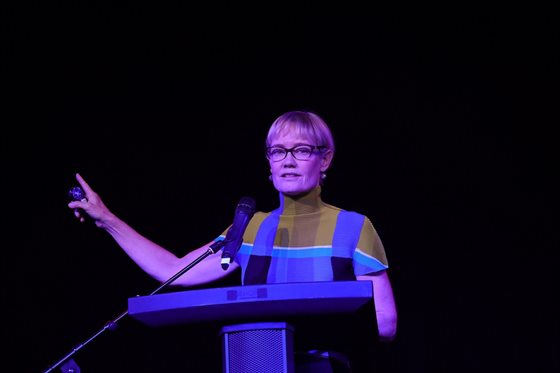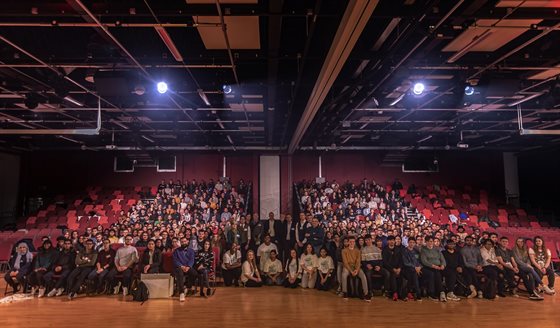Alison Brooks is one of the leading architects of her generation.

She is the only person to have won all three of the UK’s most prestigious awards for architecture – the RIBA Stirling Prize, Manser Medal and Stephen Lawrence Prize – and her work has attracted international acclaim.
So it was quite a coup having her deliver a keynote speech to 700 De Montfort University Leicester (DMU) Architecture students during the university's annual BASE – Big Architecture and Sustainability Event.

She took time out afterwards to talk about her approach to the ‘mother of all art forms’, and offer some tips for students.
‘Sustainable buildings are ones that last for hundreds of years’
“Reducing energy consumption is very important. Reducing consumption generally is important. But what makes the most sustainable buildings, in my view, are the ones that last for hundreds of years.
“We should be building structures that last for centuries, not for decades.
“So even though concrete has a bad name at the moment because it is very intensive in terms of its carbon footprint, what if that building lasts for 300 years? Even quarrying stone is quite high energy but most stone buildings are around for a very, very long time.
“It is also about investing in materials that do not require painting – there are lots of chemicals and pollutants in paint – and thinking about the furniture, the windows, the light fixtures. There are hundreds of thousands of products that go into any building and it is such a huge task to try to reduce the energy needed to construct that building.
“We have to work in a more energy efficient way, not just now but forever. But when we do build, lets build with solidity and quality in mind, in the way they built in the 17th to 19th centuries, when they expected to build for the ages and not just for the immediate future.”
‘Buildings need to be adaptable’
“I think you also have to make buildings more adaptable. The more specific a building’s use, the less adaptable it is. That is why I argue for generosity in terms of space, such as high ceilings, when designing a building. It can then change its use, take on many different roles and last a long time.
“Buildings need to contribute to a sense of place. Take, for example, these old buildings that people love. Why do they love them? Because they have generosity of space, robustness, they are iconic, they have patterns and ornamentation. That makes them interesting and artful. Combine all of these things and that is what leads to a sustainable environment.”
‘Get work experience, and take lots of photos!’
“Getting work experience while you study is key. Students do not perhaps realise how happy most architects are to have interns.
“The other thing is to look around you and photograph everything. Every architect should be a photographer because when you are designing you need to create a mental picture of the building.
“An architect’s collection of photos is serious material that will serve your entire career. I go back to photos that I took in Rome in 1984, for example. The moments you capture in photographs should be treasured.
“Your knowledge and experience should come from looking at, and photographing, buildings and getting work experience.”
‘Read everything’
“You need to read the great works of literature from the ages. You need to read the Canterbury Tales, Saint Augustine, Don Quixote, the seminal texts.
“Architecture is about responding to culture in its entirety. Having that sense of being connected to all art forms and culture is really important because it all feeds into your design.
“Architecture is known as the mother of all arts. To be able to make artful spaces and understand the history and thinking that came before you, from any field, is really crucial.
“Every architect’s work is a dialogue with the past. We are part of a continuum of a dialogue that started thousands of years ago.
“The more you are aware of that the more clients will appreciate what you do as they realise you take your work seriously and are trying to live up to examples of great work.
“It gives you an authenticity if you can draw on a broad knowledge of history and culture. I think they should teach history and literature and music to everyone.
“The whole architectural process is called research! It is a research-based profession. You have to bring expertise but you also need to bring an understanding of the past and an understanding of what your legacy should be.”
Posted on Friday 1 November 2019